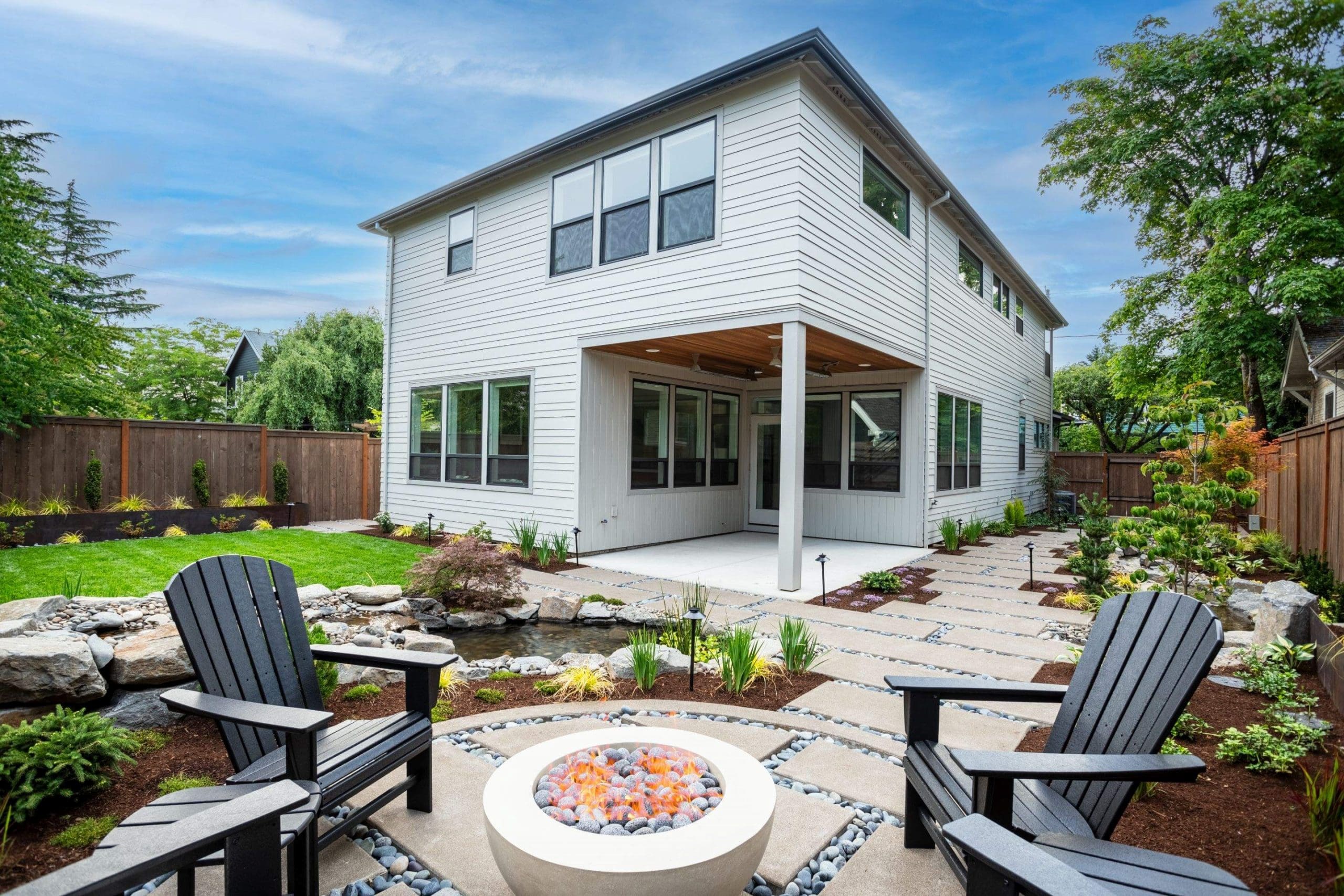
As smaller lots become more common in various parts of the country, you may be wondering if these projects are worth taking on with the challenges they provide.
Justin White, owner of K&D Landscaping, Inc., based in Watsonville, California, encourages not turning away a potential client just because they have a small yard or are in a certain neighborhood. He says you should give them the opportunity to go through the process and see if they’re a good fit for your team.
“We’ve been pleasantly surprised on some of these projects that our team has done in small areas that we would have never imagined a project would come to us,” White says.
Liz Ryan, a landscape designer with K&D Landscaping, welcomes working on smaller properties as the reduced space forces her to be really creative with the design.
“It’s a chance to push your boundaries and think of creative solutions to giving your clients what they need,” Ryan says. “How to build something that maybe is a little trickier than the normal build. Also, I think it’s really important to work with the clients really well, to help them prioritize what their most important things are to get in their backyard.”
Crafting Privacy
One major element of small landscapes is the need for privacy as often these properties are extremely close to neighboring homes. Ryan advises using plants that grow tall and slim to help provide privacy for clients. She says screening panels are also an effective option.
Austin Kelly, a landscape designer with Dennis’ 7 Dees, based in Portland, Oregon, opts to bring shorter plant material closer to the living area. He says a six- to eight-foot plant in a container can be effective at screening out a three-story home if it’s close enough to where you are sitting. He says you’d need a 15 to 20-foot tall tree to do the same job if it’s planted on the property line.
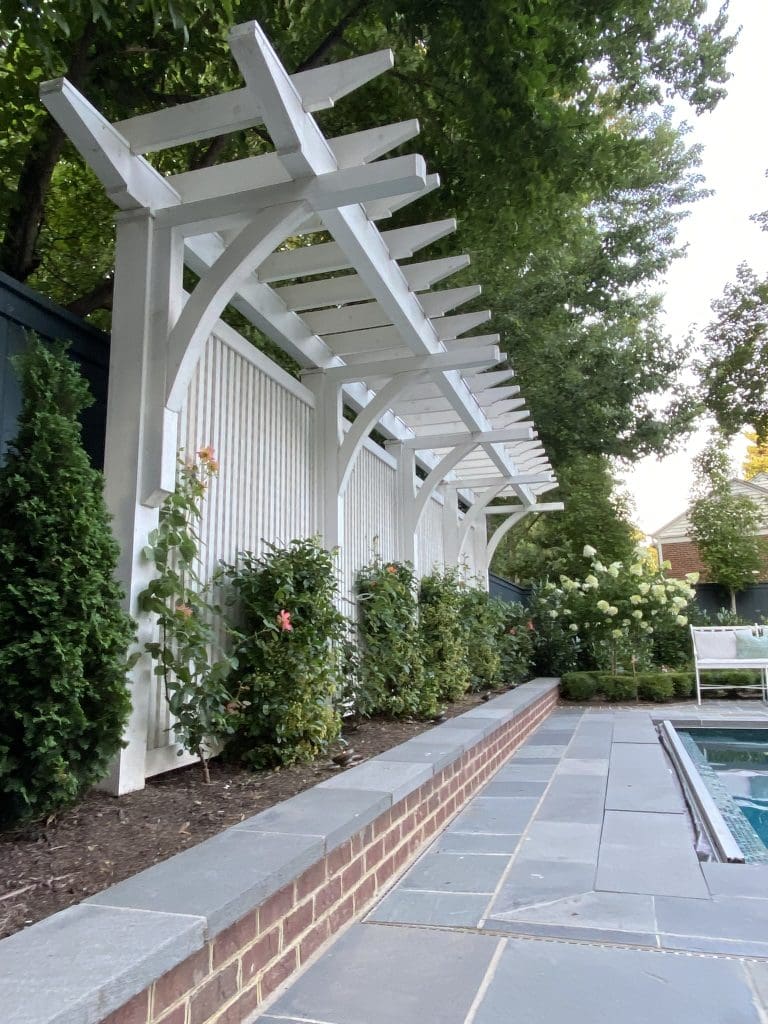
Chris Strempek, president of Complete Landsculpture, based in Dallas, Texas, says they use ornamental magnolias, hollies and even bamboo as a perimeter screen to hide unattractive sightlines such as rooflines, second story windows or power lines.
“To provide additional height for our screen plantings, we will often utilize raised masonry or even Corten planters along the permitter to help elevate plants, improve drainage and also provide also provide functionality as seat walls,” Strempek says. “We also work with vertical construction elements such as overhead structures, pergolas, colonnades, arbors and fireplaces strategically placed to help provide screening, privacy and intimacy in small areas.”
Jeff Rossen, CEO of Rossen Landscape, based in Great Falls, Virginia, says they utilize evergreen trees and shrubs like English laurels, hollies and arborvitae as well as hardscape materials, like retaining walls and pergolas to create privacy.
Balancing Hardscaping and Softscaping
Because of the smaller footprint, these properties can end up becoming dominated by hardscaping as you strive to include all of the client’s desired elements.
“In small spaces, you want to maximize the usable space so oftentimes the planting gets the chopping block, but I think it’s important to have green space, especially in these smaller areas, so it doesn’t just feel like a concrete jungle,” Ryan says.
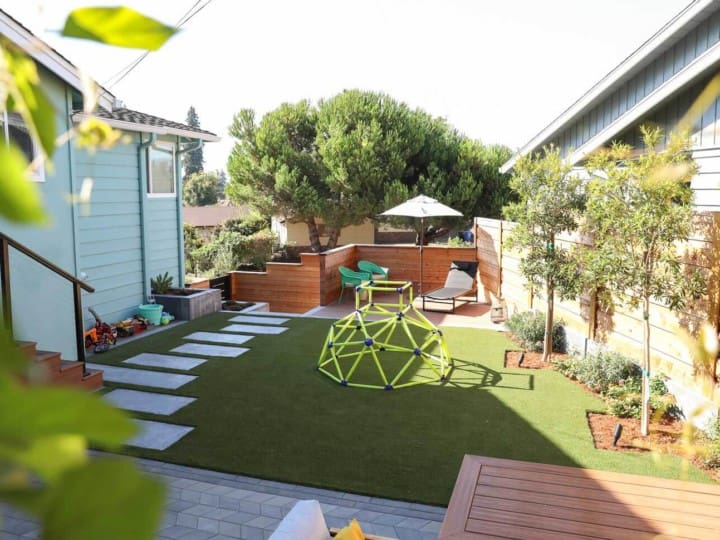
Ryan says even pockets of plantings like raised planters or a vertical panel with a vine growing on it can soften the space.
“An experienced landscape designer is going to know you don’t just put a fence up without making it green, creating interest with it, so you don’t feel like you’re in a stark, sterile environment,” Rossen says.
Strempek says they will add perimeter plantings and interior ornamental plantings utilizing pots and planters to add color, texture & fragrance, especially in key focal areas.
When selecting plant material, Strempek advises avoiding larger invasive plantings that like to spread horizontally as they will shrink the space. Kelly cautions against overly fast-growing plants.
“People want it done tomorrow and want it grown in,” Kelly says. “That is a detriment to small landscaping.”
Kelly says plants like bamboo in the ground and Leyland cypress should not be planted in small landscapes. He explains that Leyland cypress outgrows its roots and tips over in strong winds. He says it will not only take over the client’s landscape but aggressively grow into their neighbor’s as well.
“We’re always cognizant of the mature size of the plants and the growth habit,” Rossen says. “A tree that can be sheared and pruned heavily is usually a good choice for a small space.”
Ryan suggests using a limited plant palette with a lot of repetition so the client’s eyes know where to go and where to rest. She says this creates a sense of calm rather than a feeling of clutter in these smaller spaces.
Installing in Tight Spaces
Even after coming up with a cohesive design, installing these projects can be another challenge as access can be non-existent. Ryan says they have a skid steer that serves as their secret weapon on these types of projects as it can fit into a five-foot space. For tighter spaces, they have to do everything by hand with wheelbarrows.
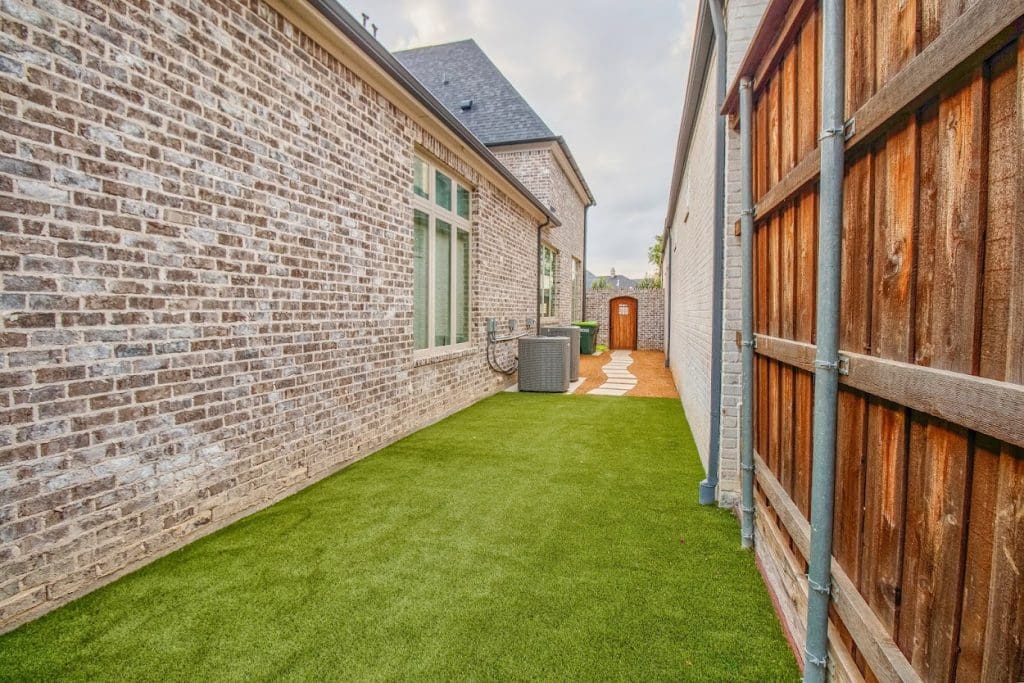
Photo: Chad Hatcher
“You have to be really intentional about the plan and process of what you install and when because you have to work your way out of the yard,” White says. “Sometimes the client will change something and instead of doing something by tractor, you got to go in and do it by hand because maybe you already put the concrete or the pavers or the deck in.”
Ryan says they strive to create a design that won’t have the clients making a lot of last-minute requests in the first place.
Strempek compares it to building a ship in a bottle, depending on the job site.
“Everything has to be considered including utility runs (gas/electrical supply), staging materials, weight of various features being considered, impact on drainage and overall constructability has to be taken into consideration,” Strempek says.
Rossen says they’ve had some projects where there’s only access through the home. He says the small landscapes can prevent them from having multiple crews working on the property at the same time. They utilize a Vermeer compact loader that can fit through a 36-inch gate. He says they also use the Landscape Buddy, which is a heavy-duty cart that can carry up to 1,500 pounds.
Strempek says they have various types of loaders and excavators for projects of different sizes, and they will rent specific machines if they don’t have one in their fleet.
“However, it is oftentimes impossible to utilize equipment effectively in certain settings and your only option is to budget for carrying materials and debris in and out manually,” Strempek says.
Kelly agrees that in some cases it makes more sense to just bring on extra labor rather than deal with the effort and cleanup required to bring in specialized equipment. He says they prefer to do things by hand to avoid the liability of property damage.
Advice for Others
Rossen advises proceeding with caution and doing your homework before presenting a design for a small backyard.
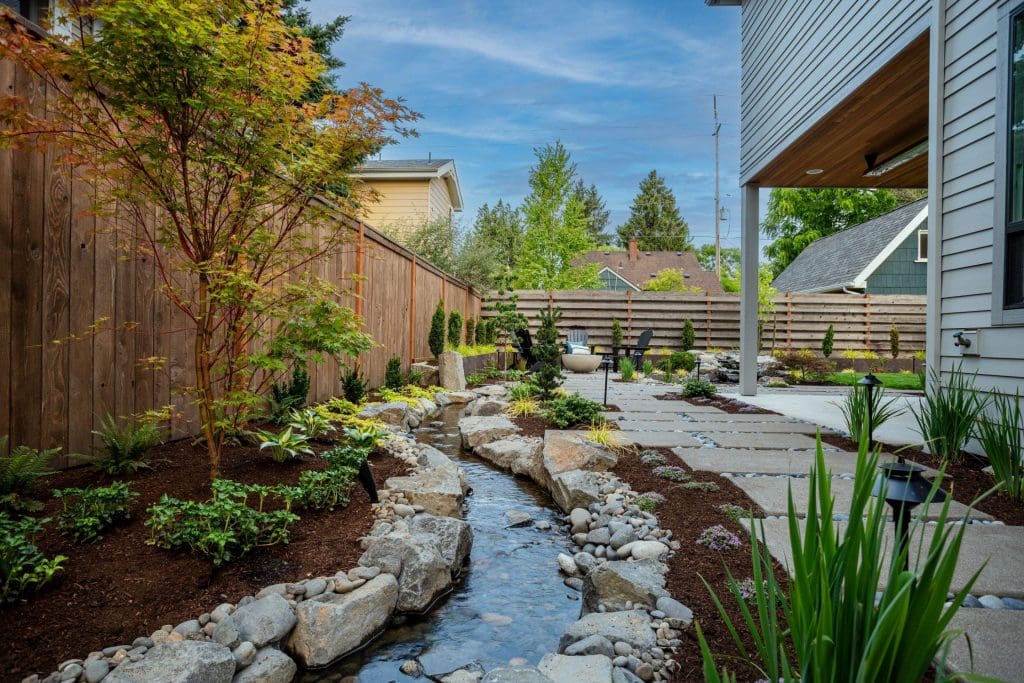
“Plan based on the client’s needs and not based on your desire to create something absolutely gorgeous and award-winning,” Rossen says.
He says sometimes you can want to design something stunning, but if you didn’t listen to the client’s desires, it doesn’t matter.
Kelly and Ryan agree it is critical to listen to the homeowner’s needs and priorities for the space to ensure they are happy. Kelly encourages educating the customer on what the possibilities are because most of them don’t understand what you can do in small spaces.
“Working in small spaces can be very rewarding for both the client and the contractor if it is well thought out and well executed,” Strempek says. “It is important to understand the many opportunities that are available to create a wonderful setting within these limitations and also to understand the added logistical and constructability difficulties and reflect it accordingly in the cost estimate and know that if your company does not have a great deal of experience with working in difficult settings; you will probably want to add even more cost to your estimate than you believe you will need to properly cover yourself.”



